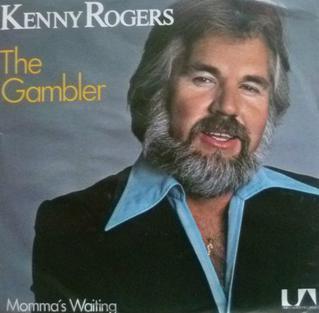 | The GamblerKenny Rogers |
Writer(s): Don Schlitz (see lyrics here) First Charted: October 28, 1978 Peak: 16 US, 13 CB, 14 GR, 18 HR, 21 RR, 3, 13 CW, 22 UK, 8 CN, 25 AU, 1 DF (Click for codes to charts.) Sales (in millions): -- US, 0.6 UK Airplay/Streaming (in millions): -- radio, 225.13 video, 198.71 streaming |
Awards:Click on award for more details. |
About the Song:In 1976, Don Schlitz was in his early 20s and working as a computer operator while trying his hand at songwriting. TR In August 1976, he wrote “The Gambler,” a song about in which the narrator is on a train with a gambler who offers advice such as “the secret to survivin’ is knowing what to throw away, and knowing what to keep.” WK Schlitz, who wasn’t a poker player, said the song isn’t really about cards, but “handling what life gives you, what some would call ‘playing the hand you’re dealt.” SF He wrote the song in honor of his late father, saying he was “the best man I ever knew. He wasn’t a gambler, but the song was my way of dealing with the relationship that I had with him.” SF Schlitz shopped it for two years before Bobby Bare recorded it on his album, Bare. It wasn’t released as a single, so Schlitz released a version, WK which hit #65 on the country charts in 1978. Hugh Moffatt reached #95 with the song that same year and it was also recorded by Conway Twitty’s son Charlie Tango TR and Johnny Cash. Producer Larry Butler brought the song to Kenny Rogers, who’d heard Schlitz’s version. TR It gave Rogers his fifth #1 country song and was a top-20 hit on the Billboard Hot 100. The spong spawned a 1980 TV movie Kenny Rogers as The Gambler. He reprised the role in four more made-for-TV movies. SF Resources:
Related Links:First posted 11/2/2021; last updated 12/262022. |









